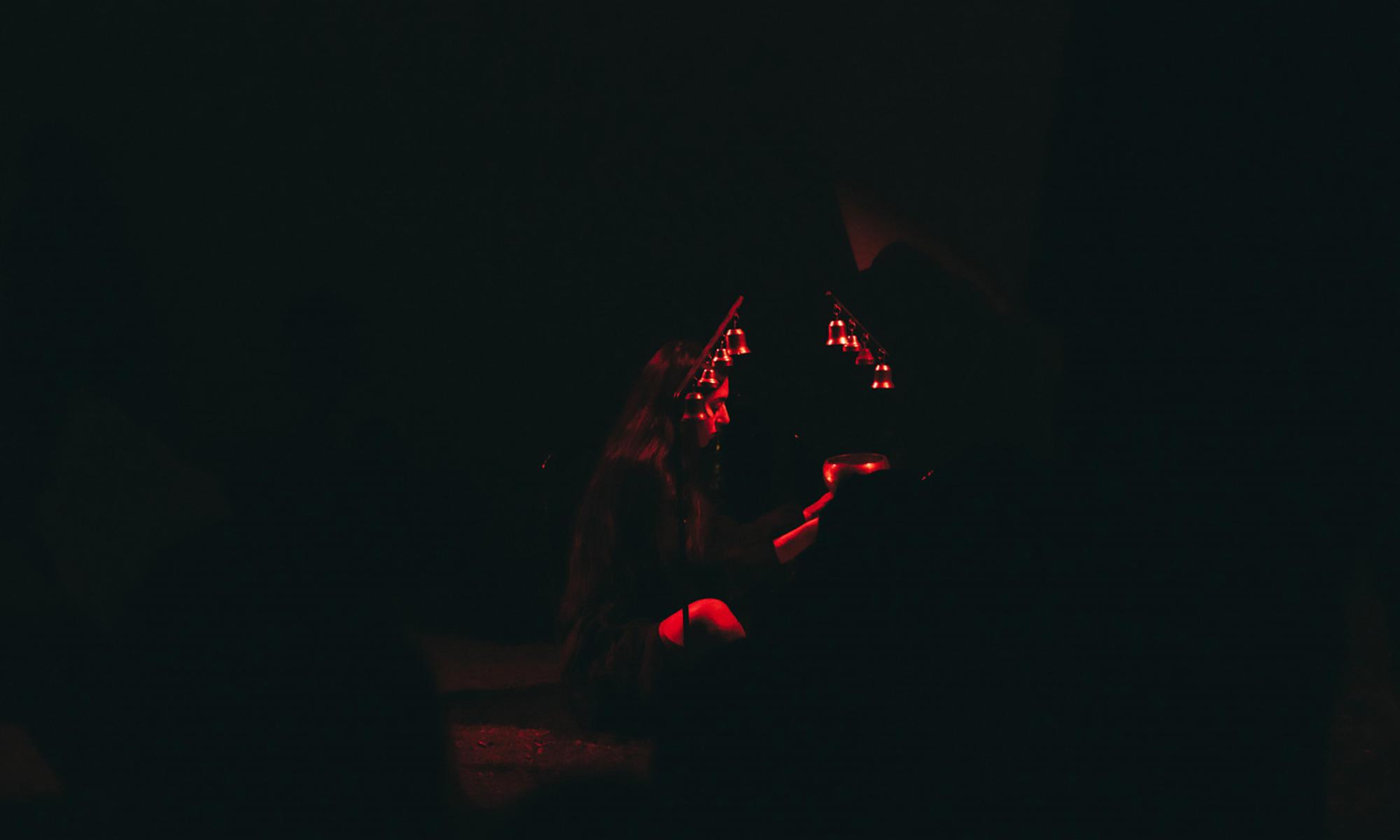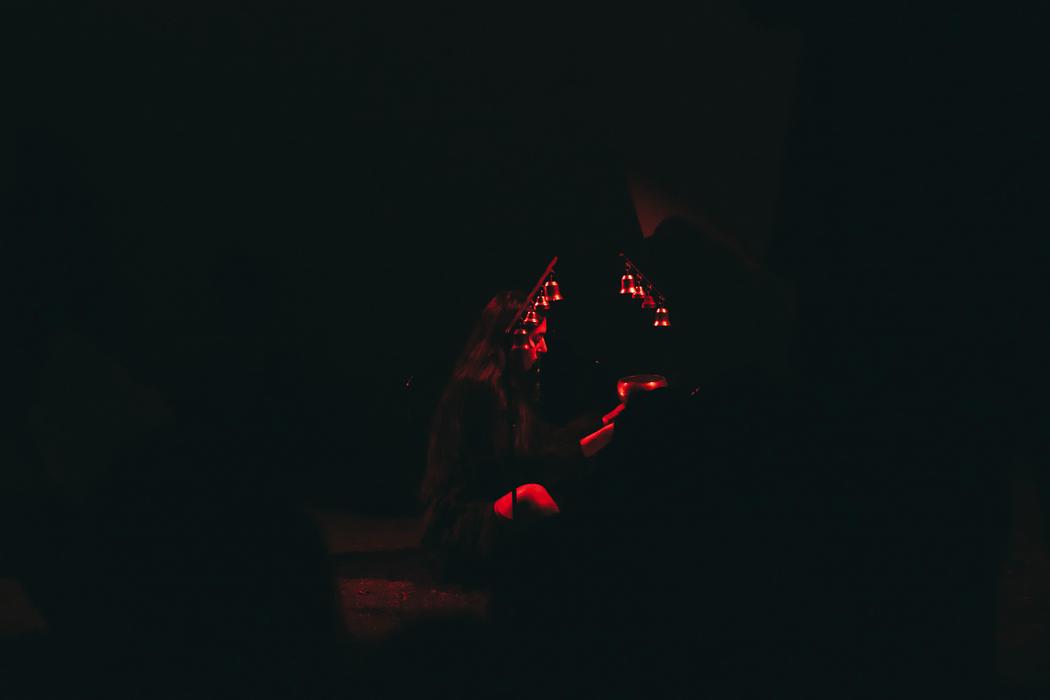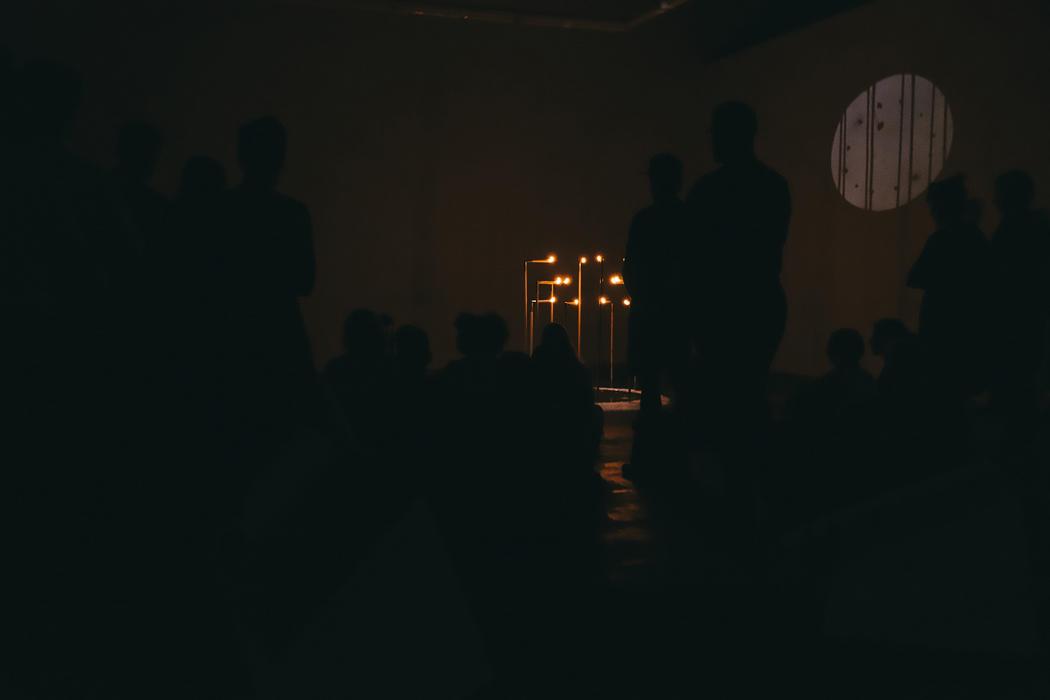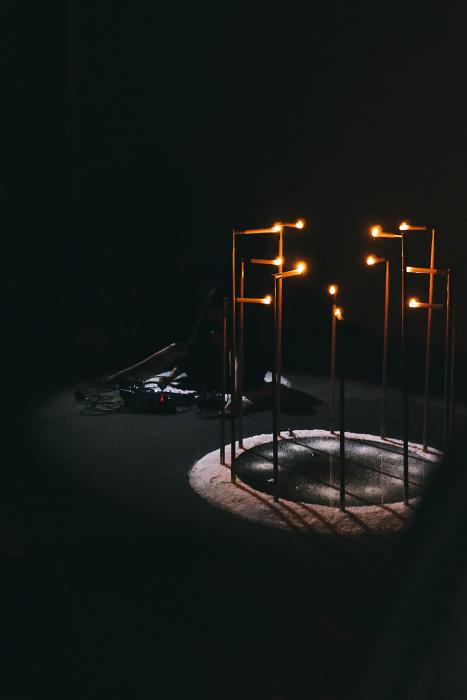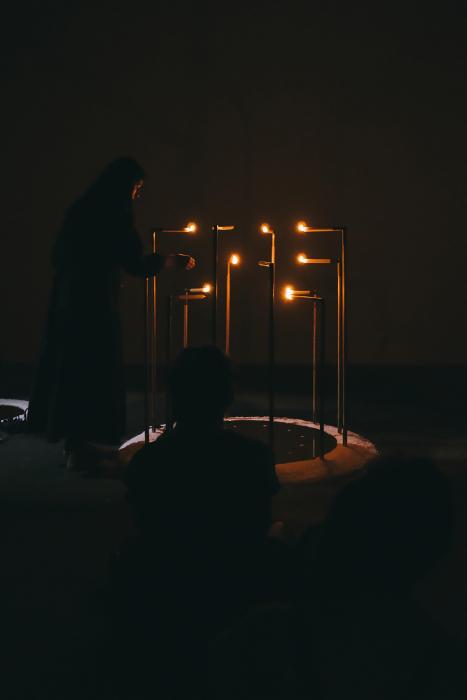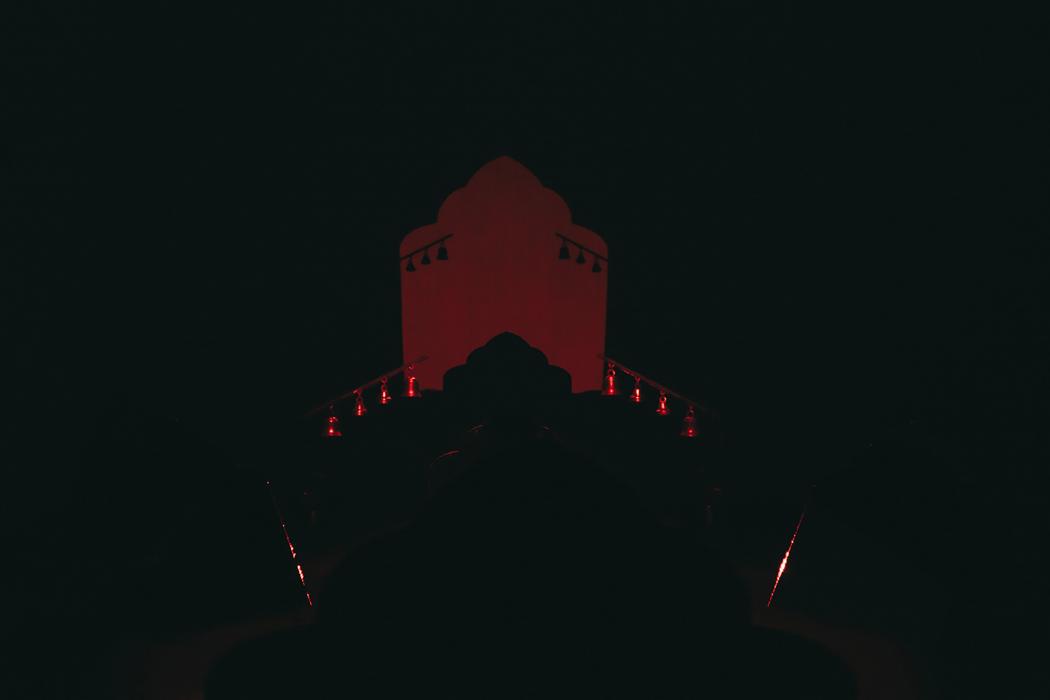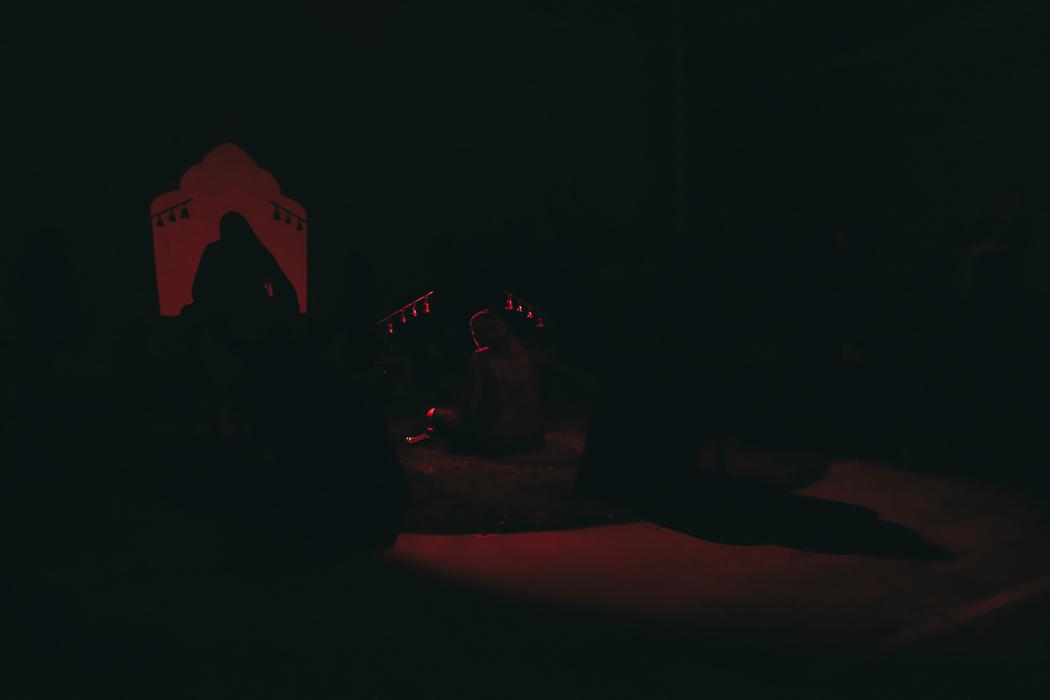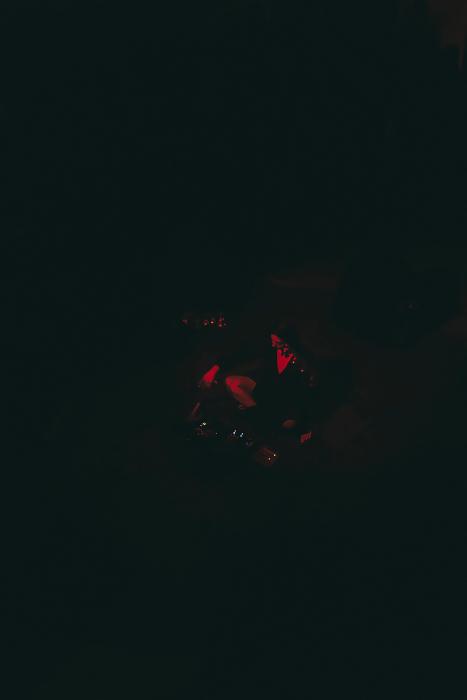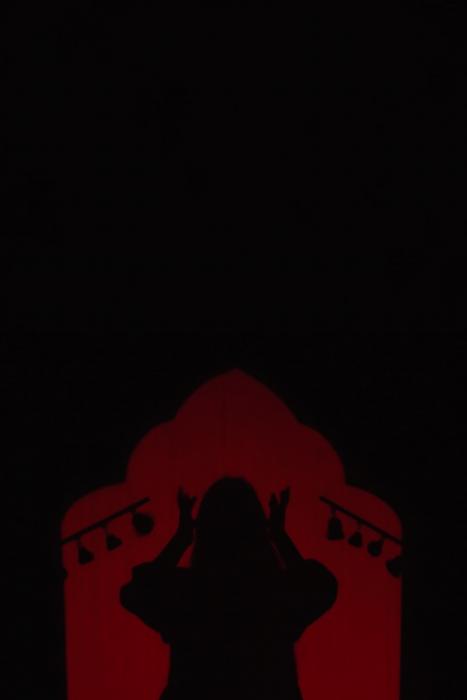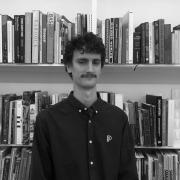Naomi Blacklock, Conjuring Alterity
On Samhain, an Anglo-pagan ceremony now entangled with Halloween, an impressive gathering took place. Performance and installation artist Naomi Blacklock’s Conjuring Alterity (2018) opened at Brisbane’s new but already well-established ARI, Outer Space. The dimly-lit gallery was intentionally warm, but not hot, and the smell of mulch dust was heavy in the air. Illuminated by a handful of coloured stage lights and fluorescent bulbs the half of the space installed with the performance apparatus of Padma (2018) glowed a Technicolour red and the other half, over the setting of Parallel Presence (2016-ongoing), shone a cool white. In chorus with the low light, muggy temperature and smell of mulch, the stage lighting’s visual reference to cinema and the representation of witchcraft was immediate, especially cult horror classics like Dario Argento’s hallucinatory Suspiria (1977) and Benjamin Christensen’s docu-fiction Häxan (1922). The deliberately sensuous atmosphere in the gallery primed a different form of spectatorship to the regular opening as noticed through the hushed tones in which everyone spoke. The room went quiet as Blacklock, dressed in a black gown, entered from a red-lit back room.
Approaching the site of Parallel Presence, its boundaries delineated by the edges of the white stage light’s beam, Blacklock struck a match and began to light twelve horizontal candles. The elevated candles bordered and hung over a circular mirror placed face-up onto a mound of salt. The angle at which the light hit the mirror created a skewed oval reflection on the wall, intersected by the shadows of the candlesticks. As Blacklock lit each candle, wax dripped onto the mirror’s surface. Simultaneously, the drips produced a small dot shadow in the wall-reflection and an amplified noise that came through a speaker in the corner of the room. The mirror had been made into an instrument. Through inputs and instrument leads the sound of each drip travelled into a series of audio mixers and effects pedals before reaching a speaker. Having lit each candle, Blacklock sat, legs splayed, on a second salt-encircled mirror in front of the audio equipment. The artist wrapped the cord of a nearby microphone around her right ankle and into it began a series of regular breaths, the sound of the exhales filling the gallery. Circles, wax, salt, mirrors and voice: the tools of an unknown ritual were activated in turn. Blacklock’s clear references to witches and the multiple histories of witchcraft also reference her own Anglo-Indian heritage. In contemporary Western society and discourse the witch, a figure from British folklore, is a symbol of power, once persecuted but now revered.[1] In other contexts, such as rural India, the accusation of witchcraft remains a death sentence.[2]
Working from within the representation of the witch, in fact inhabiting that ritual body, Blacklock breaths and voices an alternative system of power. Through manipulation of the audio signal the artist layers and twists her aural presence into a cacophony. After scaling to this crescendo of looped spectral breaths and thumping rhythms, Blacklock inhales, grasps the mic tightly and screams. The ear-splitting intensity is shocking, inducing a state of panic and a stunning morbidity that one cannot escape. An inhale. Again. An inhale. Again. Blacklock unleashes screams the length of her breath that appear to be tearing out of her, her arms and upper body shaking and arching outwards under the pressure of an immense force. This voice will be heard, even through blocked ears. Screams so guttural are rarely heard in person, only through cinema and the representation of violence do we approach a mediated version: the hysterical woman, a voice co-opted to disempower. The live event of a scream, especially so loud, is terrifying but captivating: an inescapable voice for the silenced. It is a tension likewise captured by the material of salt, which at once purifies and burns.
As Blacklock concluded the intense enactment of Parallel Presence and let the sound of dripping wax continue to play softly over the speaker, a pre-emptive path in the captive audience leading to Padma opened. The apparatus/stage, again, featured the motif of the circle and the mirror. In a ring on top of a single circle of mulch around four metres in diameter, six mehrab-shaped, inward-facing mirrors are tilted backward on a deep lean. The two psychedelic-red stage lights beam sharp reflections onto the gallery walls and the audience. Sitting cross-legged in front of more audio equipment and two arms of brass bells, Blacklock again began an amplified cycle of breathing. The outline of her seated figure and the arms of bells were clearly silhouetted within the red reflections on the walls. It recalled the horror trope of the ghostly figure in the window or the spectre glimpsed behind the protagonist in a reflection. At first sporadically and then with a continuous and restrained clapping motion wherein her hands eerily never touched, Blacklock began ringing both sets of bells. They chimed through the speakers, layering on top of the polyphonic score of looped breathing. In the strongest of the six reflections, the space between the hands became a locus of unbearable tension and control, as the sound swallowed the room. This motion completed a linguistic-performative cycle started with the title Padma, a Sanskrit word for the sacred lotus central to Hinduism and Buddhism and a guiding body-metaphor in yogic practice as a posture for meditation. The pure lotus grows from and is sustained by muddy waters. The arrangement of the mirrors, and even their mehrab-shaped heads, recall the blossomed petals of the lotus. Blacklock then occupies this site of cultural meaning and pairs it with the representations of witches. With eyes closed and bells ringing, Blacklock’s performance literally meditates on these themes.
The residue of Parallel Presence and Padma remained in the space like ghostly evidence for the duration of the exhibition. In the smaller back gallery interpretive documentation of the two performances, filmed prior to the opening by filmmaker Charlie Hillhouse, played on two screens set at eye level if one was seated on the ground. Likewise, the audio tracks were not straight recordings of either performance but an alternative sound work developed expressly for display. Many paths intersected in Blacklock’s morbidly mesmerising performances, including the many contested histories of the witch, psychedelic horror-film aesthetics that encode these histories and representations of women, the interplay and tensions between English and Indian heritage, the role of the voice (embodied and disembodied) and its relationship to feminisms and the staking out of the scream as a sociocultural vector for asserting marginalised power. Blacklock’s performances navigate these many paths with a visceral and beautiful composure that warps the performance space. Building from a legacy of feminist performance practices these works make many veils (social, cultural, spiritual, gendered) apprehensible. Light, mirrors and voice are the key media for these moments of contact. These tropes of supernatural power have been re-framed and re-organised to show forth the feminised figure of the witch as a feminist strategy.
[1] ABC News (9 August 2015), ‘Five women accused of practising witchcraft beaten to death by villagers in India, police say.’
https://www.abc.net.au/news/2015-08-09/indian-villagers-kill-five-for-witchcraft-police-say/6683330, accessed December 10, 2018
[2] Anne Marsh (2014), ‘Presence, ritual, shamanism,’ in Performance Ritual Document (South Yarra, VIC: Macmillan).

